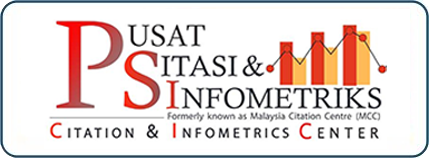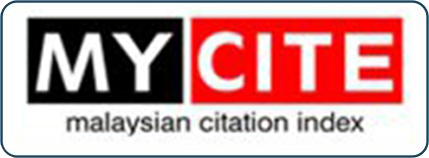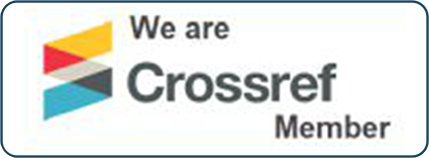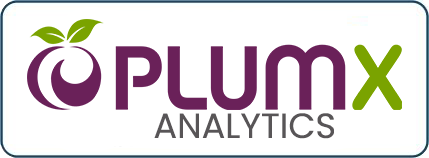The Adaptation of the AAOIFI Shariah Standard Sharikah (Musharaka) and Modern Corporations in the Islamic Finance Industry of Pakistan
A Qualitative Study
DOI:
https://doi.org/10.33102/jmifr.638Keywords:
SBP amendment, AAOIFI shariah standards, Islamic banks, musharakaAbstract
This research article examines the amendments introduced by the State Bank of Pakistan (SBP) in the adaptation of Accounting and Auditing Organization for Islamic Financial Institutions (AAOIFI) Shariah standards, with particular emphasis on conflicting clauses. It incorporates insights from stakeholder interviews to assess the implications for Pakistan’s Islamic banking industry. A key area of analysis is the adaptation of the AAOIFI standard on Sharikah (Musharaka) and its application to modern corporations. The findings reveal significant discrepancies in profit and loss sharing (PLS) arrangements, capital guarantees, management structures and Shariah governance mechanisms. Overall, the study highlights the complexities involved in aligning Shariah-compliant financial products with modern regulatory frameworks. Notably, SBP has amended 12 out of 98 clauses, reflecting an 8.16% deviation from the original standards. The research ultimately underscores the inherent challenges in integrating Shariah principles into a contemporary financial regulation, where practical adaptations may conflict with traditional Islamic finance principles.
Downloads
References
Accounting and Auditing Organization for Islamic Financial Institutions (AAOIFI). (2010). AAOIFI Shariah standards for Islamic financial institutions. Accounting and Auditing Organization for Islamic Financial Institutions.
Accounting and Auditing Organization for Islamic Financial Institutions (AAOIFI). (2023). AAOIFI Shariah standards for Islamic financial institutions. Accounting and Auditing Organization for Islamic Financial Institutions. https://aaoifi.com/shariaa-standards
Ahroum, R., Touri, O., & Achchab, B. (2020). Murabaha and Musharakah Moutanaquissah pricing: An interest-free approach. Journal of Islamic Accounting and Business Research, 11(1), 201–215. https://doi.org/10.1108/JIABR-12-2016-0147
Ali, A., Shafi, M., Tabasam, A. H., Ashiq, A., & Shabbir, M. S. (2022). Trends and volume of successful application of Musharakah as a major mode of financing in Pakistan: A case study of Meezan Bank Limited. Journal of Public Value and Administrative Insight, 5(2), 467–482. https://doi.org/10.31580/jpvai.v5i2.2621
Altameemi, A. F., & Al-Slehat, Z. A. F. (2022). Islamic investment financing and commercial bank facilities: Mediation effect of the Islamic bank size. International Journal of Professional Business Review, 7(4), 1–21. https://doi.org/10.26668/businessreview/2022.v7i4.e458
Auda, J. (2008). Maqasid al-Shariah as Philosophy of Islamic Law: A Systems Approach. The International Institute of Islamic Thought (IIIT). https://iiit.org/wp-content/uploads/Maqasid-Al-Shariah-as-a-Philosophy-of-Islamic-Law-Combined.pdf
Ayub, M. (2021). The Riba case pending for three decades: The Federal Shari’at Court, Pakistan may fulfill its constitutional responsibility by outlawing the interest. Journal of Islamic Business and Management, 11(01), 1–13. https://doi.org/10.26501/jibm/2021.1101-001
Cheema, S. A. (2019). Non-repugnancy decisions of the Federal Shariat Court of Pakistan: An analysis of politico-legal ramifications. LUMS Law Journal, 7, 48–73. https://doi.org/10.2139/ssrn.3469246
Doll, H. (2017). Quantitative approaches for estimating sample size for qualitative research in COA development and validation. Clinical Outcomes, 1–11.
Dworkin, S. L. (2012). Sample size policy for qualitative studies using in-depth interviews. Archives of Sexual Behavior, 41, 1319–1320. https://doi.org/10.1007/s10508-012-0016-6
Elhalaby, S., Sarea, A., Alnesafi, A., & Al-Absy, M. S. M. (2023). The adoption of AAOIFI standards by Islamic banks: Understanding the microeconomic consequences. Economies, 11(2), 1–22. https://doi.org/10.3390/economies11020039
Farooq, M., & Ahmed, M. M. (2013). Musharakah financing: Experience of Pakistani banks. World Applied Sciences Journal, 21(2), 181–189. https://citeseerx.ist.psu.edu/document?repid=rep1&type=pdf&doi=a2011f0cb4be7c446de290a16872b557703de2b8
Federal Shariat Court (FSC). (2022). Judgment on Riba -S-P 30-L1991 Riba case-28.04.2022. Federal Shariat Court Reports, 30, 1–338. https://www.federalshariatcourt.gov.pk/en/leading-judgments/
Hennink, M., & Kaiser, B. N. (2022). Sample sizes for saturation in qualitative research: A systematic review of empirical tests. Social Science & Medicine, 292, 1–10. https://doi.org/10.1016/j.socscimed.2021.114523
Khan, F. (2008). Islamic banking by judiciary: The ‘backdoor’ for Islamism in Pakistan? South Asia: Journal of South Asia Studies, 31(3), 535–555. https://doi.org/10.1080/00856400802441938
Kulmie, D. A. (2024). Musharakah financing: Profitability improvement tool for Islamic banks. International Journal of Religion, 5(6), 609–619. https://doi.org/10.61707/mzpevj08
Mansoori, M. T., & Ayub, M. (2022). Federal Shar¯ı’ah Court’s Judgement on Riba¯: An Appraisal and Some Suggestions. Journal of Islamic Business and Management (JIBM), 12(01). https://doi.org/10.26501/jibm/2022.1201-002
Marshall, B., Cardon, P., Poddar, A., & Fontenot, R. (2013). Does sample size matter in qualitative research?: A review of qualitative interviews in this research. Journal of Computer Information Systems, 54(1), 11–22. https://doi.org/10.1080/08874417.2013.11645667
Marwat, S. K., Hamid, A., Iqbal, Z., & Mirakhor, A. (1992). The legal framework for Islamic banking: Pakistan’s experience. In R. C. Effros (Ed.), Current Legal Issues Affecting Central Banks (Vol. 1, pp. 351–435). International Monetary Fund. https://www.elibrary.imf.org/display/book/9781557751423/ch18.xml
Mehmood, A. (2002). Islamisation of Economy in Pakistan: Past, Present and Future. Islamic Studies, 41(4), 675–704. https://doi.org/10.52541/isiri.v41i4.4962
Quraishi, A., & Kamali, M. H. (2000). Principles of Islamic Jurisprudence. Journal of Law and Religion, 15(1/2), 385–387. https://doi.org/10.2307/1051529
Sandelowski, M. (1995). Focus on qualitative methods: Sample size in qualitative research. Research in Nursing & Health, 18(2), 179–181. https://doi.org/10.1002/nur.4770180211
Shafiq, S. (2012). De-secularizing finance: Islamic banking in Pakistan [Doctoral dissertation, University of Notre Dame]. Curate ND. https://doi.org/10.7274/gt54kk93n7z
State Bank of Pakistan (SBP). (1984). Permissible modes of Islamic financing. State Bank of Pakistan. https://www.sbp.org.pk/departments/pdf/IBD-OldCircular/BCD-cir13-1984.pdf
State Bank of Pakistan (SBP). (2003). Policies for promotion of Islamic banking. State Bank of Pakistan. https://www.sbp.org.pk/bpd/2003/C1.htm
State Bank of Pakistan (SBP). (2004). Essentials and model agreements for Islamic modes of financing. State Bank of Pakistan. https://www.sbp.org.pk/ibd/2004/CL01.htm
State Bank of Pakistan (SBP). (2008). Instructions for Shariah compliance and standards. State Bank of Pakistan. https://www.sbp.org.pk/ibd/2008/C2.htm
State Bank of Pakistan (SBP). (2013). SBP’s Shariah Standard on Sharikat ul Milk and Diminishing Musharakah. State Bank of Pakistan. https://www.sbp.org.pk/ibd/2013/C2.htm
State Bank of Pakistan (SBP). (2018). Shariah governance framework for Islamic banking institutions. State Bank of Pakistan. https://www.sbp.org.pk/ibd/2018/C1.htm
State Bank of Pakistan. (2010). Adaptation of 04 Shariah standards of AAOIFI. State Bank of Pakistan. https://www.sbp.org.pk/ibd/2010/C1.htm
Syed, J., & Anwer, M. (1991). In the Federal Shariat Court of Pakistan (Shariat Petition No.30-L of 1991). Federal Shariat Court of Pakistan. https://www.federalshariatcourt.gov.pk/Judgments/S-P%2030-L1991%20Riba%20Case-28.04.2022.pdf
Tlemsani, I., Marir, F., & Majdalawieh, M. (2020). Screening of Murabaha business process through Quran and Hadith: A text mining analysis. Journal of Islamic Accounting and Business Research, 11(9), 1889–1905. https://doi.org/10.1108/JIABR-05-2020-0159
Usmani, M. M. T. (2000). An introduction to Islamic finance (Vol. 254). Brill. https://doi.org/10.1163/9789004479913
Widarjono, A. (2021). The role of equity financing on the profitability of Indonesian Islamic banks. Muqtasid: Jurnal Ekonomi Dan Perbankan Syariah, 12(2), 129–143. https://doi.org/10.18326/muqtasid.v12i2.129-143
Yan, H., Yahya, M. H. H., Latip, M., & Ali, M. H. (2022). Islamic finance in China: Current landscape and future-forward. The Journal of Muamalat and Islamic Finance Research, 19(2), 88–101. https://doi.org/10.33102/jmifr.v19i2.464
Yustiardhi, F., Diniyya, A., Ahmad Faiz, A., Subri, S., & Kurnia, N. (2020). Issues and challenges of applying Mudarabah and Musharakah in Islamic bank financing products. Journal of Islamic Finance, 9(2), 26–41. https://doi.org/10.31436/jif.v9i2.482
Zafar, M. B., & Sulaiman, A. A. (2020). Islamic banking in Pakistan: Emergence, growth, and prospects. In A. Rafay (Ed.), Growth and emerging prospects of international Islamic banking (pp. 61–77). IGI Global Scientific Publishing. https://doi.org/10.4018/978-1-7998-1611-9.ch004
Downloads
Published
How to Cite
Issue
Section
License
Copyright (c) 2025 Umar Farooq, Muhammad Bilal Zafar

This work is licensed under a Creative Commons Attribution 4.0 International License.















